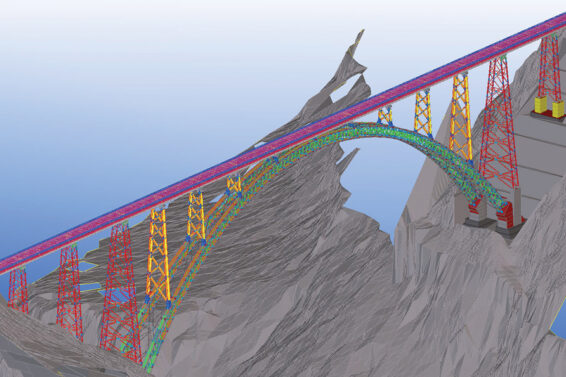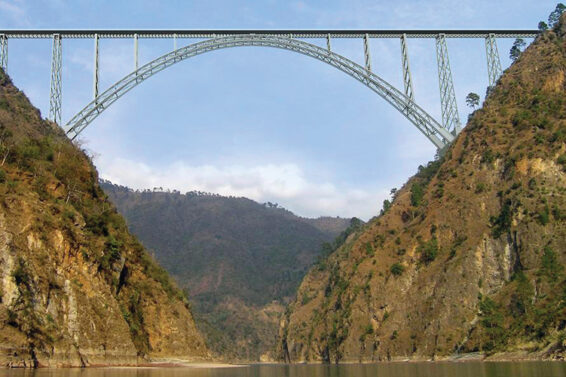We Are Ready And Prepared To Support The Indian Construction Industry In Its Digital Transformation.

Harsh Pareek
Regional Sales Director, India, and SAARC, Trimble Solutions
How are technologies evolving in bridge and flyover construction? What are the latest digital solutions for the safe and sustainable construction of bridges and flyovers?
The construction of bridges and flyovers has witnessed a significant transformation in recent years, driven by swift technological advancements and evolution in construction methods. In many progressive countries including India, a significant proportion of large-scale bridge or flyover projects today employ BrIM or Bridge Information Modeling, to accurately plan, engineer and execute the construction. The use of BrIM, combined with sophisticated project management tools and other software optimises project workflows, reduces materials wastage, and helps construction companies finish these complex projects on time and within budgets.
Modern BIM software from companies like Trimble already offers powerful ERP-like capabilities to construction companies. For bridge design and construction specifically, Tekla Structures, the flagship BIM software from Trimble, uses Bridge Creator extension, which enables the creation and utilisation of Bridge Information Models (BrIM). These models can be so well-detailed and information-rich to actually serve as Digital Twins – or in other words, present a 100% digital view of the bridge or flyover before it is constructed. With such a powerful 3D BIM model, the construction of the actual bridge is greatly simplified.

Simultaneously, as construction companies are becoming more concerned about onsite safety, cutting-edge technologies like augmented reality (AR), virtual reality (VR), mixed reality (MR) and the Internet of Things (IoT) are starting to gain popularity for building bridges. IoT sensors are often deployed on construction sites to monitor factors like structural stress, temperature, and vibrations, ensuring the safety and stability of the construction whereas AR and VR technologies are employed for safety training, allowing workers to simulate dangerous scenarios and learn how to respond without real-world risks. Another significant contributor to worksite safety is the deployment of drones and robots, which are used for site surveys, inspections, and monitoring construction progress, providing real-time data to project managers. They also aid in environmental impact assessments and site analysis, contributing to sustainability.
What are the solutions offered by Trimble in bridge or flyover construction?
Trimble Construction portfolio has industry-leading technology solutions for optimising bridge or flyover planning, design and construction. These solutions are customised for every stage of the bridge lifecycle, from the planning and design stage to construction and operation, and they offer agility and insight to project managers, contractors, architects, engineers, and property owners, among other stakeholders.
Tekla Structures from Trimble is one of the industry’s most comprehensive Bridge Information Modeling (BrIM) solutions. It is the most sophisticated yet accessible 3D parametric modeling environment that stores all up-to-date information about the bridge project and aids in accurate planning and visualisation. The 3D and fully constructible model created using Tekla Structures is similar to a Digital Twin and it ensures data-driven and connected workflows throughout the construction process, making it faster, seamless and less prone to errors or mistakes. We also offer Trimble Connect, a revolutionary cloud-based collaboration platform that facilitates uninterrupted communication and data sharing between the different project stakeholders.
On the hardware side, Trimble is well-renowned for its precision measurement technologies. Trimble’s robotic Total stations and GNSS equipment play a critical role in ensuring the accuracy of foundation and column placement during the construction of a bridge.
For strategic bridges or flyovers, structural monitoring solutions from Trimble enable real-time assessment of the structural integrity during and after construction. These systems detect anomalies or movements that might indicate potential issues in the structure, thus enhancing safety.

How do you look at the future trends in bridges and flyovers? What are the future plans of the company?
Bridges and flyovers are major infrastructure assets that not only serve as vital cogs in the nation’s infrastructure – ensuring smoother transportation – but also often take several months or years to build and can cost several crores of taxpayers’ money. As such, we believe that progressive countries like India will soon transition towards a new approach to building and operating bridges and flyovers known as ‘Integrated Asset Lifecycle Management’. This approach can ensure all new bridges and flyovers that we create will deliver maximum positive impact on the people, economy, and the environment.
We also believe that future infrastructure projects will use AI and tech-enabled intelligence in a major way to streamline and fast-track the actual construction so that new bridges or flyovers can be opened to the public faster than ever. Once they are ready for public use, intelligent public asset management solutions will help local municipalities or highway operators to extract maximum value, by collecting real-time data and drawing actionable insights from this data on various aspects like traffic flow, structural stability and integrity, and regular or preventive maintenance.
Ultimately, we believe the ongoing digitalisation of public infrastructure creation and operational usage will radically transform how we build and operate bridges and flyovers in the future, and we as a global technology leader are ready and prepared to support the Indian construction industry in its digital transformation.







